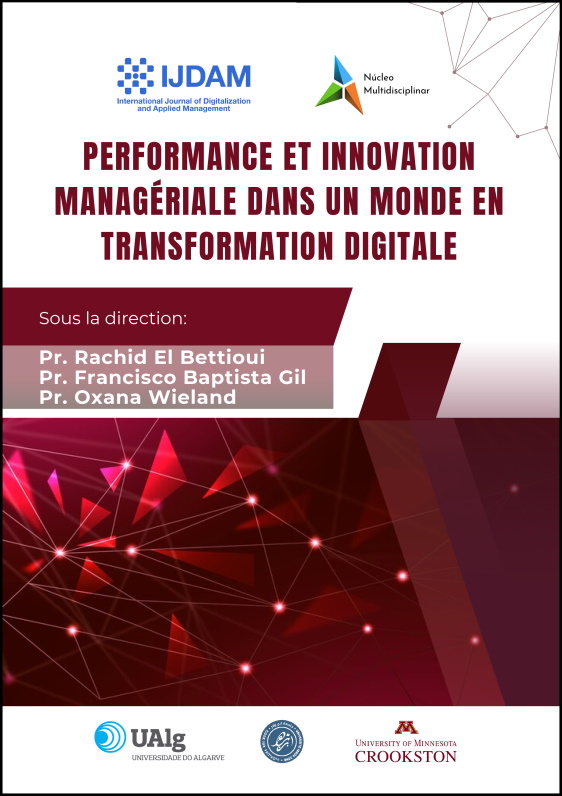Metodologia do Índice Abrangente de e-participação Eletrónica
DOI:
https://doi.org/10.23882/emss.24212Palavras-chave:
Índice abrangente de e-participação, Distribuição normal, Medida absoluta, Trajetória de progresso, Pontuações equivalentesResumo
A e-participação refere-se à participação dos cidadãos no processo de governação através das TIC. A importância da participação electrónica está a crescer com as rápidas mudanças tecnológicas e o uso crescente das Tecnologias de Informação e Comunicação (TIC), superando as limitações das participações físicas em termos de tempo e distância. Ignorando as questões relacionadas com o aumento de dimensões e indicadores, o documento descreve as deficiências metodológicas das medidas existentes de e-participação e sugere um método de índice abrangente de e-participação (CEPI) cobrindo tanto o lado da oferta como o da procura. O CEPI envolve a transformação de cada subíndice e índices componentes em pontuações normalmente distribuídas. A normalidade permite agregação aritmética significativa de pontuações de subíndices, dimensões e CEPI como soma das pontuações das dimensões. O CEPI proposto evita escalonamento e satisfaz as propriedades desejadas, permitindo comparações significativas, melhor classificação, classificação de países e também facilita o teste de hipóteses de igualdade das médias do CEPI para dois países, avaliação do progresso e teste da significância do crescimento do CEPI registrado por um país ou grupo de países. A elasticidade da dimensão como razão de mudança no CEPI devido à mudança unitária na dimensão pode ser usada para classificar as dimensões. Os decisores políticos e os investigadores podem tirar vantagens do método proposto para encontrar a relação entre os lados da oferta e da procura da participação electrónica.
Referências
Alshehri M and Drew S. (2010): E-government fundamentals, IADIS International Conference ICT, Society and Human Beings 2010
Blanc DL (2020): e-participation: a quick overview of recent qualitative trends. DESA Working Paper No. 163
Bwalya KJ and Mutula SM (2014): E-Government: Implementation, Adoption and Synthesis in Developing Countries, Walter de Gruyter GmbH & Co KG
Chakrabartty, Satyendra Nath (2022): Disability and Quality of Life. Health Science Journal, Vol. 16. No.12, 1 – 6. https://www.itmedicalteam.pl/articles/disability-and-quality-of-life-115716.html
Chakrabartty SN (2021): Optimum number of Response Categories. Current Psychology, 42, 5590–5598. https://doi.org/10.1007/s12144-021-01866-6
Chakrabartty, Satyendra Nath (2020): Improved Quality: Item and Test parameters. Health Sciences, Volume 1, 1 – 5. https://doi.org/10.15342/hs.2020.267
Chakravarty, SR (2003): A Generalized Human Development Index. Review of Development Economics, 7(1), 99-114
Coppedge M, Gerring J, Knutsen, C. et al. (2021): V-Dem Codebook v11. V-Dem Working Paper forthcoming. https://doi.org/10.23696/vdemds21
Davies D and Bouldin W (1979): A cluster separation measure, IEEE Transactions on Pattern Analysis and Machine Intelligence, 1(2), 224 – 227
Greco S, Ishizaka A, Tasiou M and Torrisi G. (2019): On the Methodological Framework of Composite Indices: A Review of the Issues of Weighting, Aggregation, and Robustness, Soc Indic Res 141:61–94 https://doi.org/10.1007/s11205-017-1832-9
Hamed KH and Rao AR (1998): A modified Mann-Kendall trend test for autocorrelated data, Journal of Hydrology, 204; 182 196
Hand, D. J. (1996): Statistics and the Theory of Measurement, J. R. Statist. Soc. A; 159, Part 3, 445-492
Jamieson, S (2004): Likert scales: How to (ab) use them. Medical Education, 38, 1212 -1218
Kabanov, Yury (2022): Refining the UN E-participation Index: Introducing the deliberative assessment using the Varieties of Democracy data, Government Information Quarterly, 39 (1) https://doi.org/10.1016/j.giq.2021.101656
Macintosh, PA (2004): Characterizing e-participation in policy-making, in: 37th Annual Hawaii Interna¬tional Conference on System Sciences. IEEE, 5–8.
Medaglia, R. (2012): e-Participation research: Moving characterization forward (2006-2011). Government Information Quarterly 29, 346–360.
Montgomery D and Runger G (2013): Applied Statistics and Probability for Engineers, NY: John Wiley and Sons.
Organisation for Economic Co-operation and Development (OECD) (2021): Better governance, planning and services in local self-governments in Poland. OECD Publishing. https://doi.org/10.1787/550c3ff5-en
Paruolo P, Saisana M, and Saltelli A (2013): Ratings and rankings: voodoo or science? Journal of the Royal Statistical Society: Series A (Statistics in Society) 176(3):609- 634
Preston CC. & Colman AM (2000): Optimal number of response categories in rating scales: reliability, validity, discriminating power, and respondent preferences, Acta Psychologica 104, 1-15
Sæbø Ø, Rose J, Skiftenes Flak L. (2008): The shape of e-Participation: Characterizing an emerging research area. Government Information Quarterly 25, 400–428.
Seth S and Villar A (2017): Measuring human development and human deprivations. OPHI Working Paper 110, University of Oxford
Susha, Iryna and Grönlund, Ake (2014): Context clues for the stall of the Citizens’ Initiative: lessons for opening up e-participation development practice, Government Information Quarterly, 31(3), 454- 465. https://doi.org/10.1016/j.giq.2014.02.005.
Tambouris E, Liotas N, Tarabanis K.(2007): A framework for assessing e-participation projects and tools, in: Proceedings of the 40th Hawaii International Conference on Systems Sciences on E-Business, E-Management and E-Learning.
United Nations (2020): E-government survey 2020. Digital Government in the decade of action for sustainable development, Department of Economic and Social Affairs, https://bit.ly/4cs33KD
UN (2019): E-Participation Index. https://publicadministration.un.org/en/eparticipation
UN DESA (2016): Transforming our world: The 2030 agenda for sustainable development. https://sdgs.un.org/goals. Evaluating e-Participation ( METEP ): Assessment of Readiness at the Countr Evaluating e-Participation ( METEP ): Assessment of Readiness at the Country Level. 1–24
UN (2014): E-Government for the Future We Want, E-Government Survey 2014, Department of Economic and Social Affairs, New York.
United Nations (2013): Measuring and evaluating e-participation (METEP): Assessment of Readiness at the Country Level, 1 – 24
UNDP (2010): Human Development Report 2010. New York: Palgrave Macmillan
Waheduzzaman, W., & Khandaker, S. (2022). E-participation for combating corruption, increasing voice and accountability, and developing government effectiveness: A cross-country data analysis. Aust J Publ Admin, 81, 549-568. https://doi.org/10.1111/1467-8500.12544
Whitmore, A. (2012): A statistical analysis of the construction of the United Nations E-Government Development Index, Government Information Quarterly, 29(1); 68-75. https://doi.org/10.1016/j.giq.2011.06.003
Welch, E. (2012): The Rise of Participative Technologies in Government, in: Transformational Government through E-Gov Practice: Socioeconomic, Cultural, and Technological Issues. Emerald Group Publishing Limited.
Downloads
Publicado
Como Citar
Edição
Secção
Licença
Direitos de Autor (c) 2024 Satyendra Chakrabartty

Este trabalho encontra-se publicado com a Creative Commons Atribuição-NãoComercial 4.0.







